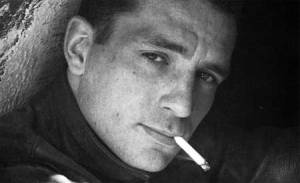As this blog weaves its way through a landscape of stories, a common thread will quite possibly be music. Music is my lifeline. And so here I share a music moment. A Blue music moment:

Joni Mitchell’s Blue (1971) is a most loved album. Critically acclaimed, this album took confessional songwriting to another level. However it is so much more than just confessions where Joni wears her heart on her sleeve. She ploughs the depth of human emotion in a way that seers through the soul. It is a magnificent exploration of blue spaces and places. The vulnerability we all hold inside is revealed through her poetic lines and threads that weave above sparse piano and guitar chords. Blue articulates emotions and thoughts in the most profound way. Listening to this album is having an intimate and honest conversation with a significant person.
Every song on Blue is a masterpiece. I have chosen my five favourite tracks to explore at greater depth.
Joni never states exactly, in cold hard fact, what she is talking about. This is one of her greatest lyrical abilities. Through the sketching and painting of wondrous word images she evokes the senses. The sense to explore and investigate – to listen to the lyrics again and again. To slowly draw out the universal truths layered so delicately in the stories she tells.
Little Green is the third song. A whimsical and sad lullaby to the child she bore out of wedlock and gave up for adoption. These sentiments are never stated but the lament to her lost child whispers throughout:
Born with the moon in Cancer
Choose her a name she will answer to
Call her green for the children who have made her
Little green, be a gypsy dancer
The title track Blue begins with the line:
Blue, songs are like tattoos
This is one of the most beautiful and brilliant beginnings as I sink into my soul. The melancholy swims around as Joni delves deep into her psyche and mine. Songs are indeed tattoos that mark my existence and live in my mind’s ear and eye. This image is expanded when Joni sings:
Blue, here is a song for you
Ink of a pin
Underneath the skin
An empty space to fill in
This speaks to me of how music and lyrics seep into the skin like that of tattoo ink, forever etching themselves on and in my very being. They live there permanently. A single strike of the piano key or strum of a guitar string will retrace me back to the moment that sound took residence, settling underneath my skin.
River is a tale of lost love using the coming of the Christmas season as a backdrop on which to paint these sorrowful sentiments. Joni speaks of love and relationships in such a deeply personal way. She draws me into her world because she is real and so are these losses. The need to run away when love has let us down is universal but only Joni expresses it with such tangible feeling and eloquence:
Oh I wish I had a river so long
I would teach my feet to fly
Oh I wish I had a river
I could skate away on
I made my baby cry
The penultimate song on the album is A Case Of You. It talks to love. Love is overwhelming and all-encompassing in this bittersweet ode. The lyrics are outstandingly beautiful. The imagery is rich with details of Joni. There are references to Canada – the country of her birth. Her passion for painting. This song takes me back to times when I have felt this kind of love. Soaring so high and tangled up in the magic threads that this kind of love weaves.
I remember that time you told me, you said,
“Love is touching souls”
Well surely you touched mine
‘Cause part of you pours out of me
In these lines from time to time
Oh, you’re in my blood like holy wine
You taste so bitter and so sweet
Oh, I could drink a case of you, darling
And I would still be on my feet
I would still be on my feet
Blue concludes with The Last Time I Saw Richard. Joni paints a sad and cynical tale which perhaps mirrors her own experiences that inspired this album. Yet, like the rainbow after the storm I have come through the darkness and depression, transformed. I realise these blue spaces are not permanent but merely phases. The album ends with this hope:
Only a dark cocoon before I get my gorgeous wings
And fly away
Only a phase, these dark café days
I know I will listen to Blue again and again. Each time will reveal something new and greater insight will be gained. This is the trademark of great art. Like a kaleidoscope each viewing or listening reveals different colours and patterns. There is inherent brilliance that stays constant but enough space in the sound and words to feel and hear something original forever.
Thank you Joni for this musical treasure.









